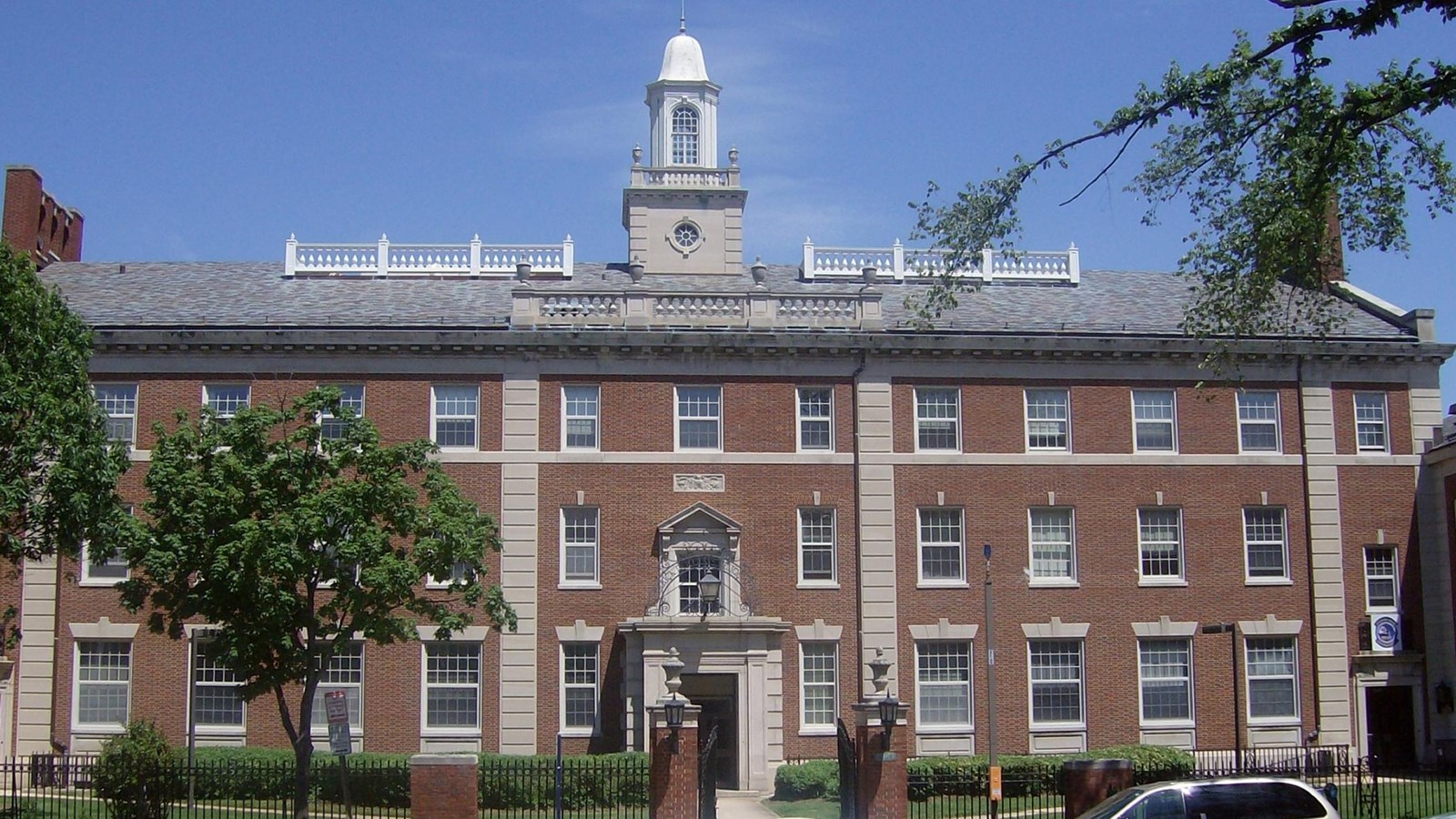Last updated: September 25, 2024
Place
Washington, D.C.: Andrew Rankin Memorial Chapel, Frederick Douglass Memorial Hall, and Founders Library at Howard University

Photo by Qwerty0, CC BY-SA 3.0, https://commons.wikimedia.org/w/index.php?curid=26042443
Andrew Rankin Memorial Chapel, Frederick Douglass Memorial Hall, and Founders Library at Howard University in Washington, DC, were important settings for this institution's role in the legal establishment of racially desegregated public education. Two nationally recognized leaders of that fight, Charles Hamilton Houston and Thurgood Marshall, were closely associated with Howard University. From 1929, Howard Law School became an educational training ground, through the vision of Charles Hamilton Houston, for the development of activist black lawyers dedicated to securing the civil rights of all people of color.
Howard University also provided preparation of the legal strategy presented by Thurgood Marshall and the National Association for the Advancement of Colored People's (NAACP) Legal Defense Fund leading to the historic decisions in Brown v. Board of Education ending segregation in education. The university represents the role that institutions of higher learning played in bringing about racial desegregation in education. Howard University led the country in the education of civil rights attorneys dedicated to legally securing desegregation, the academic research supporting the unconstitutionality of segregation, and the community outreach needed to challenge and define the interpretation of the United States Constitution in American society. No other university provided the same level of support to the desegregation fight.
The graduates of Howard Law School, Houston and other faculty, litigated many of the cases involving challenges in education. In fact, nine of the 10 lawyers who argued Brown were graduates of or professors at Howard Law School. The best known graduate was Thurgood Marshall, who, when appointed in 1967 by President Lyndon B. Johnson, became the first African American to sit on the Supreme Court of the United States. After obtaining his undergraduate degree from Lincoln University in Pennsylvania, Marshall graduated from Howard Law School in 1933 and immediately began his campaign against segregation, providing counsel in a host of civil rights cases. When Marshall became director-council of the NAACP Legal Defense Fund in 1938 he directed the legal attack on segregation at all educational levels, arguing successfully in Sipuel v. Oklahoma State Board of Regents(1948), McLaurin v. Oklahoma State Regents for Higher Education (1950), and Sweatt v. Painter (1950). Marshall served as lead attorney on Brown, capitalizing on his previous desegregation success. In addition to producing a cadre of civil rights attorneys through the law school, the university contributed to the preparation and presentation of the Legal Defense Fund strategy. Graduates of the university, arguing in groundbreaking litigation, looked to their alma mater to provide research, expert testimony, and legal critiques of their litigation efforts.
Visit the National Park Service We Shall Overcome travel itinerary to learn more about the civil rights movement themes and histories. Also, be sure to check out Civil Rights subject site.
A project through the Historically Black Colleges and Universities (HBCU) Grant Program, which helps preserve the historic structures on HBCU campuses, funded handicap accessibility renovation work on the Founders Library at Howard University in 2018.
